

 Add to favorites
Add to favorites
Marble Queen (Epipremnum aureum ‘Marble Queen’) is another common pothos variety. It features heart-shaped green leaves heavily splashed and streaked with creamy white. The foliage is usually similar in size to golden pothos but a bit more challenging to grow, which I discuss below. Marble Queen is the most popular cultivar and very slow-growing. It is highly variegated, with foliage that tends to be more white than green.
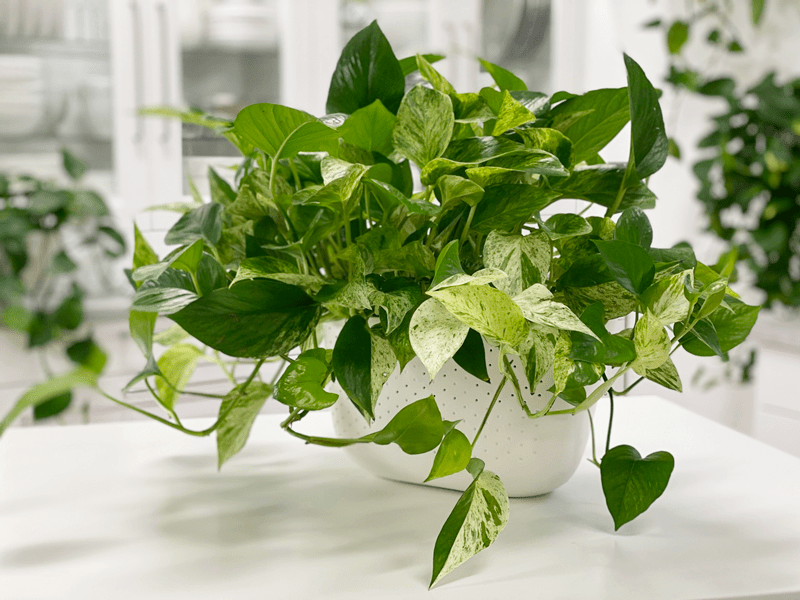
I really enjoy the leaf patterns of the Marble Queen pothos. At first, I struggled…well, not sure if that’s the right word, but I found pothos plants with a LOT of variegation on the leaves to be a tad bit more temperamental. The more white they have on the leaves, the more indirect sunlight the plant requires. If your plant doesn’t get enough light, it will start to revert to being all green.
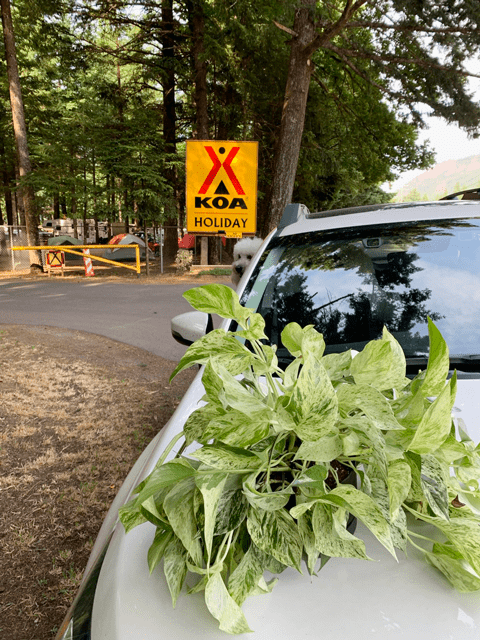 I bought my first one from a gal on a Facebook virtual garage sale. She lived over an hour away but was going camping for Memorial weekend (2019) in a nearby town, which cut our distance in half.
I bought my first one from a gal on a Facebook virtual garage sale. She lived over an hour away but was going camping for Memorial weekend (2019) in a nearby town, which cut our distance in half.
I agreed to meet her at the campground. So, I loaded Milo (the pup) into the car and motored down the highway. I failed to find out what she was driving, what she looked like, or what camping spot they were parked in. When we got the campground, I parked the car at the entrance and stood outside the car.
Soon, I spotted a tiny woman carrying a large, lush pothos plant. No more guessing. I was beyond thrilled with the plant. I handed her twenty dollars, hopped in the car, and pointed it toward home.
The first two days were wonderful; the plant looked so healthy. Then…it started to droop heavily. I had it (I thought at the time) in a great location that received plenty of indirect light, the soil appeared healthy, it was watered perfectly, I didn’t see any bugs… I was stumped.
Several weeks passed; each day was an up and down day. I couldn’t figure out why it wasn’t happy in its new home. I reached out to the original owner, and she suggested that I transplant it into a larger pot. So I did. It was pretty root bound, but not alarmingly so. It still fought with depression. That is what I now referred to it as because I couldn’t figure out any other reason for its droopiness. It was flat- out depressed and missed its previous home.
After about a month, I decided to relocate it. I had tried everything else. I surrounded it with some other pothos plants and said a little prayer. Within days, the leaves started to perk up; within a week, it was vibrant and healthy! It continues to reside in a little jungle of plants that are near a north-facing window. You can see that the plant did lose some of the white variegation, but that’s okay; I still LOVE the plant.
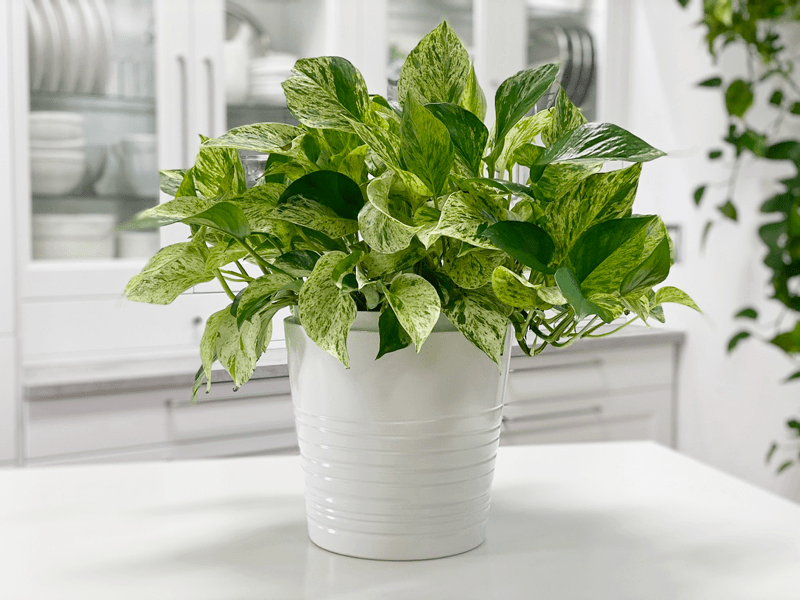
Here it is, about six months later. It didn’t take nearly that long to “come back to life” … just wanted to show you an update. It may appear a bit smaller, and that’s because it is. During the battle of “depression,” I had to prune the plant. Plus, as you can see, the leaves and stems are nice and perky… strong! They are not all soft and floppy as they were when I got the plant.
Marble Queen pothos like their soil to be kept on the drier side. I water mine every 1-2 weeks, allowing the soil to dry out between waterings. I then take the plant to the kitchen sink and drench the soil until it starts dripping from the drain holes. Note * If your plant is in a hight light spot, it will require more water than space with less light. Overwatering can lead to brown/block splotches on the edges of the leaves. It took me a bit to learn this. (see photos down below)
According to the books, this plant is considered a low-light plant. However, low light does not mean NO light. Make sure the location you’re putting this plant in has either a window or receives at least 8 hours a day of bright fluorescent light. In bright light, pothos appreciates a watering when the soil has dried halfway through the pot.
In low- and medium-light spaces, it is best to allow the soil to dry almost all the way through the pot, but do not let the plant sit dry for extended periods. A good indication of your plant needing water is when the foliage begins to soften/wilt. It is best to water just as it begins to wilt (not after it has fully collapsed), and always be sure to feel the soil in addition to visually monitoring the plant.
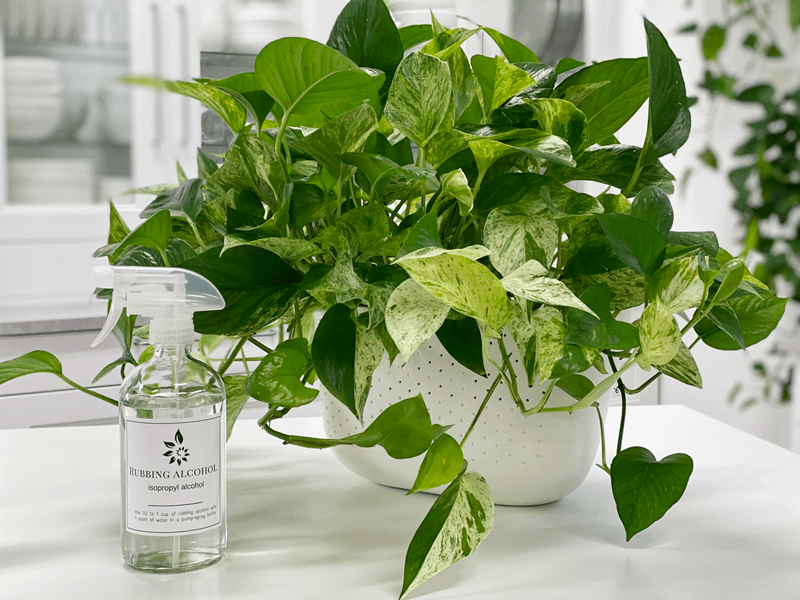
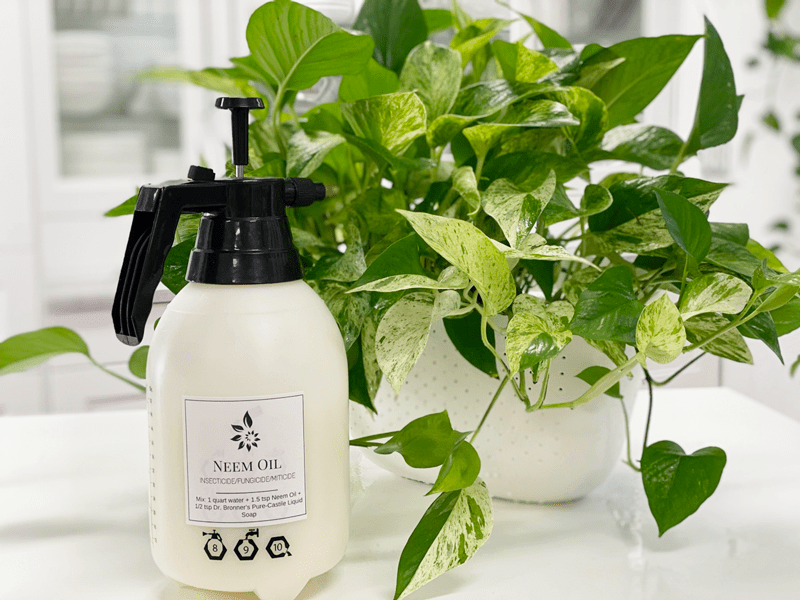
They prefer average to warm temperatures of 65-85 degrees. Do not expose it to temperatures below 65 degrees even for a short time, because cold air will damage the foliage. Avoid cold drafts and heat vents.
The Marble Queen is an easy indoor plant, and you don’t need to worry about fertilizing a lot. Feed it every 3-6 months with general-purpose indoor plant fertilizer. If you overfeed your plants, they will let you know. Here are a few things to watch for:
If you overfeed a plant, you can remove from its current soil and repot it in fresh soil; this is undoubtedly the best way to get rid of the excess nutrients affecting your plant. Alternatively, you can flush the soil, which involves drenching the soil with water and letting it drain out. Repeat this several times to help the soil get rid of excess fertilizer.
Brown Tips
Dark Spots with Yellow Halos
Browning Leaves
Yellowing Leaves
Yellowing Leaves with Brown or Black Spots
My Plant Is Sparse-Looking
If you want to have healthy houseplants, you MUST inspect them regularly. Every time I water a plant, I give it a quick look-over. Bugs/insects feeding on your plants reduces the plant sap and redirects nutrients from leaves. Some chew on the leaves, leaving holes in the leaves. Also watch for wilting or yellowing, distorted, or speckled leaves. They can quickly get out of hand and spread to your other plants.
IF you see ONE bug, trust me, there are more. So, take action right away. Some are brave enough to show their “faces” by hanging out on stems in plain sight. Others tend to hide out in the darnedest of places, like the crotch of a plant or in a leaf that has yet to unfurl.
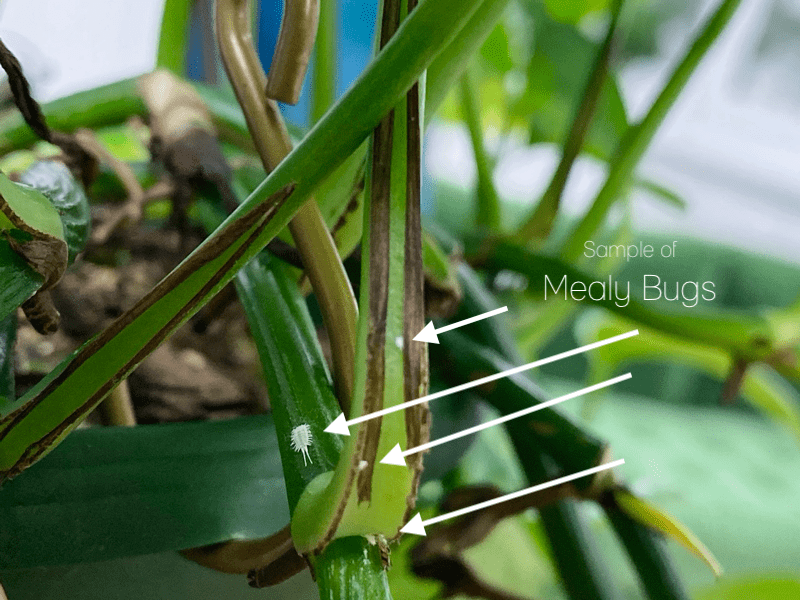
Marble Queen pothos is poisonous, with a #2 toxicity level. Pets that eat stems or leaves of the plant may exhibit vomiting, pawing at the mouth, lack of appetite, and drooling.